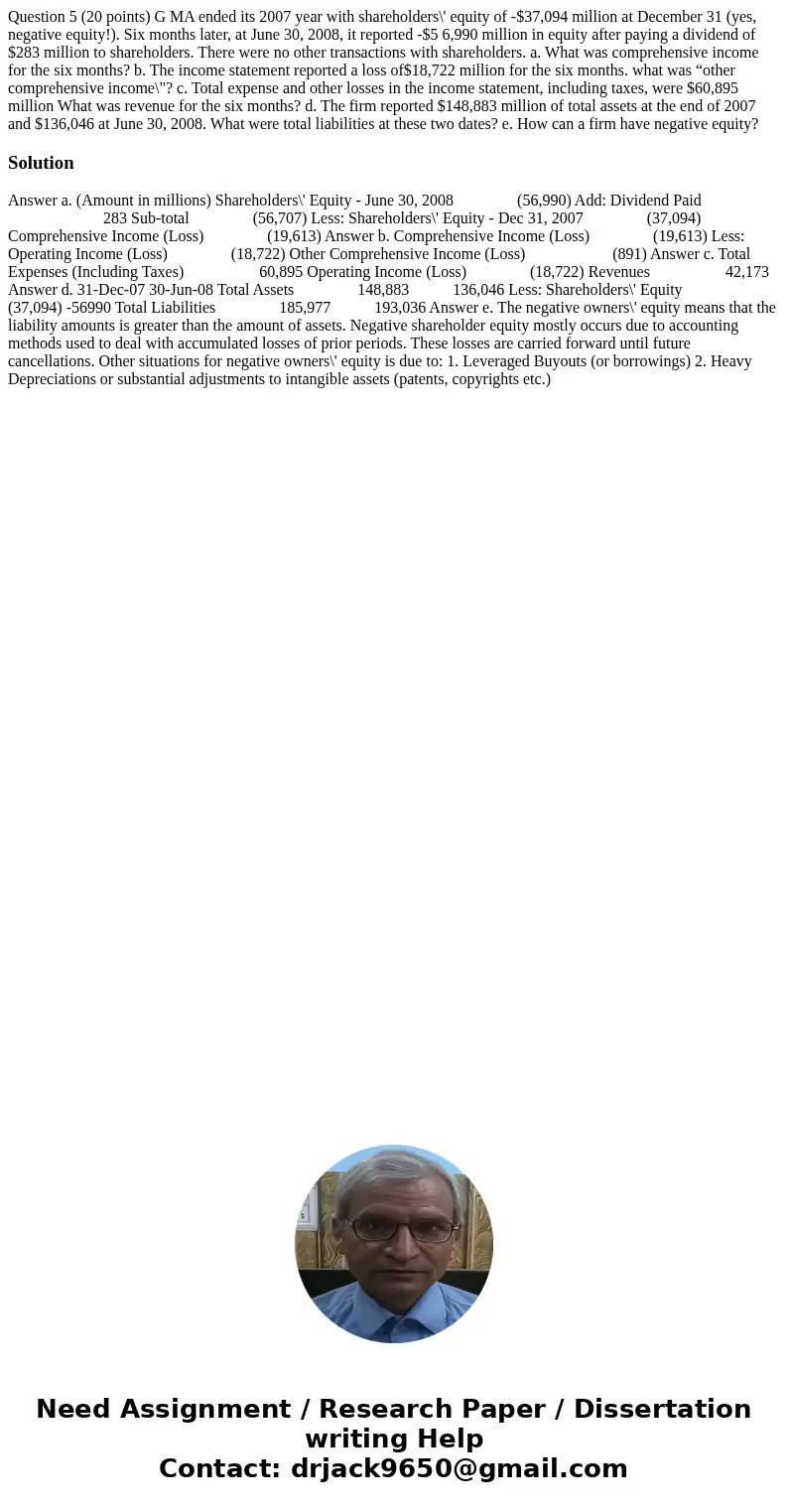Question 5 20 points G MA ended its 2007 year with sharehold
Question 5 (20 points) G MA ended its 2007 year with shareholders\' equity of -$37,094 million at December 31 (yes, negative equity!). Six months later, at June 30, 2008, it reported -$5 6,990 million in equity after paying a dividend of $283 million to shareholders. There were no other transactions with shareholders. a. What was comprehensive income for the six months? b. The income statement reported a loss of$18,722 million for the six months. what was “other comprehensive income\"? c. Total expense and other losses in the income statement, including taxes, were $60,895 million What was revenue for the six months? d. The firm reported $148,883 million of total assets at the end of 2007 and $136,046 at June 30, 2008. What were total liabilities at these two dates? e. How can a firm have negative equity? 
Solution
Answer a. (Amount in millions) Shareholders\' Equity - June 30, 2008 (56,990) Add: Dividend Paid 283 Sub-total (56,707) Less: Shareholders\' Equity - Dec 31, 2007 (37,094) Comprehensive Income (Loss) (19,613) Answer b. Comprehensive Income (Loss) (19,613) Less: Operating Income (Loss) (18,722) Other Comprehensive Income (Loss) (891) Answer c. Total Expenses (Including Taxes) 60,895 Operating Income (Loss) (18,722) Revenues 42,173 Answer d. 31-Dec-07 30-Jun-08 Total Assets 148,883 136,046 Less: Shareholders\' Equity (37,094) -56990 Total Liabilities 185,977 193,036 Answer e. The negative owners\' equity means that the liability amounts is greater than the amount of assets. Negative shareholder equity mostly occurs due to accounting methods used to deal with accumulated losses of prior periods. These losses are carried forward until future cancellations. Other situations for negative owners\' equity is due to: 1. Leveraged Buyouts (or borrowings) 2. Heavy Depreciations or substantial adjustments to intangible assets (patents, copyrights etc.)
 Homework Sourse
Homework Sourse